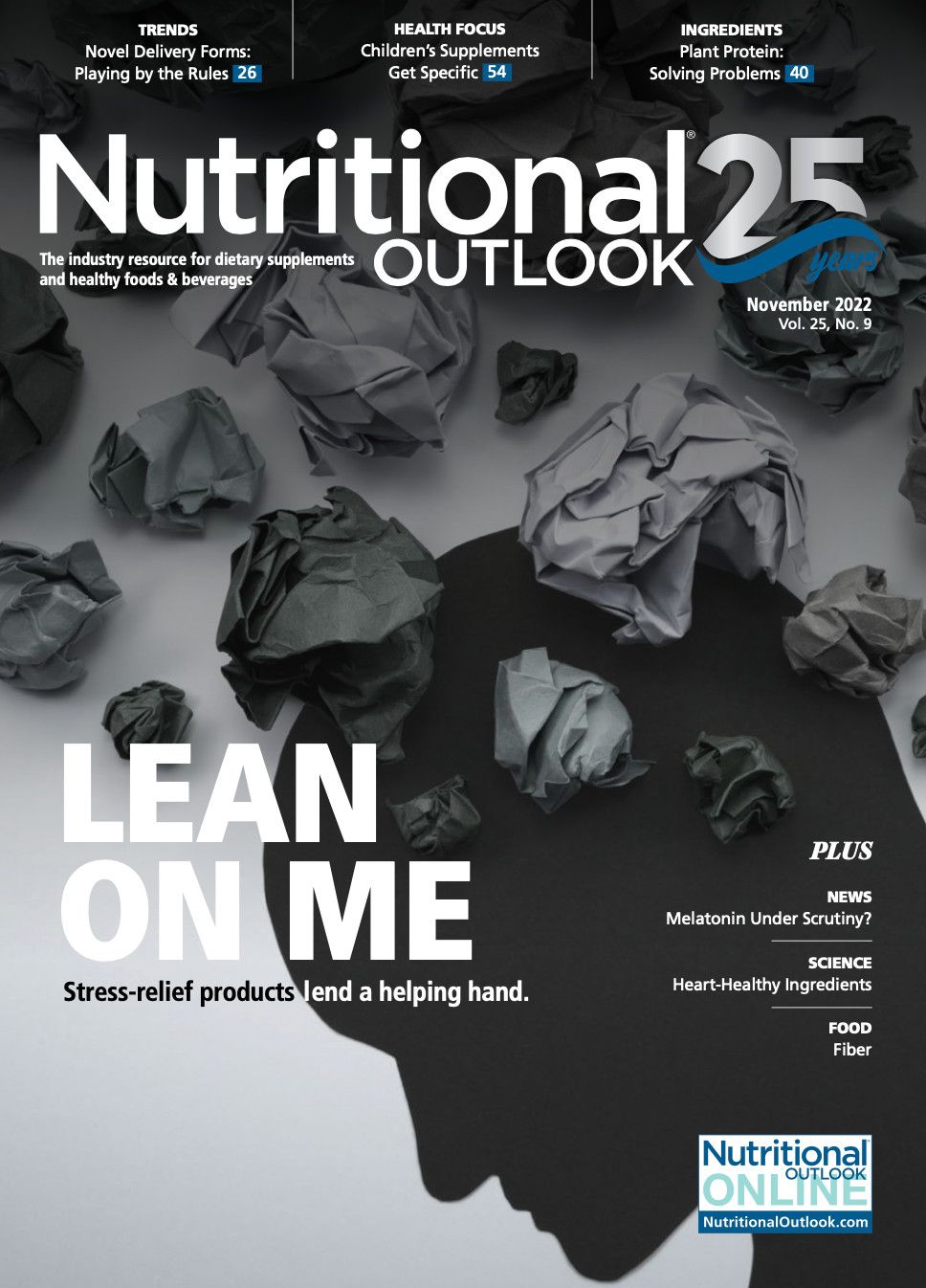Tough row to hoe? What improvements are still needed in the plant-protein ingredient space?
Plant protein innovations pull up weeds one by one.
Photo © Natali - Stock.adobe.com

Although some may claim they saw it coming all along, it’s likely no one could have predicted even a decade ago just how popular plant proteins would become—not just with vegetarians and vegans, but with everyone.
By that same token, there’s no telling how much higher plant proteins can fly now that industry has solved all the challenges that historically stymied plant proteins vis-à-vis taste, texture, functionality, nutritional quality, sourcing…Oh, wait: We haven’t solved all those challenges yet, have we?
No, we haven’t.
Yet as Jodie Kenny, business development director, plant proteins, Kerry (Beloit, WI), rightly notes, “The changes in the category in the last 10 years have been transformational”—and they’ve transformed the category via “innovations and ingenuity” in manufacturing, processing, and plant proteins themselves.
So while “there’s still work to do” to improve the sector further, she says, “equally, there’s reason to be inspired by the pivotal changes we’ve seen in the last several years. And there will undoubtedly be more to come.”
Planting Progress
Plant proteins may be the current rage, but they’re hardly new.
The original textured vegetable protein (TVP) actually debuted in the 1960s when William T. Atkinson—with help from ADM (Chicago), which still holds TVP’s trademark—invented a process for texturizing soy flour into what Jacquelyn Schuh, ADM’s global marketing director for protein nutrition solutions, describes as “a fibrous, spongy material used as a standalone, plant-based meat alternative, and as a nutritional extender in a variety of meat and poultry products.”
And, boy, have we come a long way since.
“Today, the plant-based space has exploded with new protein options incorporating soy, pea, wheat, oat, almond, coconut, and more,” Schuh observes. “Even more niche sources from algae, lupin, mycoprotein, and ancient grains like hemp and sorghum are also emerging. It’ll take time for these proteins to command the awareness and consumption of mainstream options, but there’s potential to introduce them to consumers in blends with more popular plant-protein sources.”
No Slowing Down
And make no mistake: There’s plenty of popularity in the plant-protein space.
The global plant-protein market reached a value of $10.28 billion in 2020 and should top $17.52 billion in 2028, representing a revenue CAGR of 6.8%1, according to Mark G. Walin, senior vice president, business development and marketing, Bio-Cat (Shakopee, MN). “This shows that plant protein is slated to become even more widely popular,” he says, “with no sign of slowing down.”
Tara Kozlowich, vice president of marketing, Merit Functional Foods (Winnipeg, Manitoba, Canada), adds that an “impressive” 62% of U.S. households now purchase plant-based products, per SPINS, with SKUs now scattered across 30-odd categories.
“Consumers are buying everything from plant-based milk and cheese to egg-free bakery, protein bars, meat alternatives, and beyond,” she says. “And because many of these products have come very far, there’s no sacrifice anymore.”
Driving Demand
That’s lowered barriers to entry, and that’s encouraged migration to the sector that’s been as broad-based as it is strong.
“For me,” observes Gregory Belt, founder and CEO, EverGrain Ingredients (St. Louis, MO), “the real change has been in the last three to five years. Plant-based is now mainstream; it’s not just one consumer segment.”
As evidence, he notes that though the percentage of vegan and vegetarian consumers has largely remained static, “the percentage of plant-forward flexitarians has really increased.”
In fact, says Hanna Bean, marketing manager, Americas, Beneo (Chicago, IL), one in four global consumers now call themselves flexitarian, compared to the 7% who identify as vegan, vegetarian, or pescatarian—a margin that makes flexitarians the “most important target group for manufacturers of plant-based products,” she adds.
Enter the Flexitarian
So just who are these coveted flexitarians?
“Open their refrigerators, and you may find conventional milk and a plant-based alternative sitting side-by-side,” wagers Mark Fahlin, business development manager, Cargill (Minneapolis). “And demographically, they tend to be younger, more affluent, more educated, more urban—that is, the change agents of the future.”
Schuh notes that ADM Outside Voice research2 found that flexitarians expect “more optionality and accessibility” from plant-protein formats and sources, and that they direct particular attention at “offerings that meet their affordability, taste, texture, and nutrition expectations.”
But those values are hardly unique to flexitarians; to wit, the majority of global vegetarians, vegans, and flexitarians all agree that “taste and nutrition are equally important in plant-based products,” Schuh says.
“Another key factor driving purchase,” Belt offers, “is sustainability. Research (Source: Innova Market Insights) shows this has really taken off in the past two or three years, with visibility around climate change and COVID.” Today’s consumers, Belt says, are “much more aware of how their everyday decisions impact what’s going on around the world.”
That said, “Flexitarians don’t want drastic dietary changes,” Kenny maintains. Rather, “They want a simplified, convenient, and healthier way to eat what they love”—animal or vegetable. That’s what makes them flexitarian: “They ‘flex’ their diets to eat both meat and dairy along with plant-based alternatives,” she says.
Pitfalls of Plants
The flipside, of course, is that flexitarians are “much more critical of their plant-based experiences because they’re still consuming meat and dairy,” Kenny continues. “And when plant-based products fail to match their desired taste experience, they’ll go back to traditional meat and dairy products.”
Unfortunately, plant proteins often failed to meet those expectations historically, while also suffering from “deficient nutritional quality in the form of low digestibility scores and insufficient amino-acid makeup, especially around low levels of essential and branched-chain amino acids,” observes Elzaphan Hotam, CEO, NextFerm Technologies USA (Short Hills, NJ).
Another “big issue” nutritionally, comments Sean Garvey, director of R&D at Bio-Cat, is the body’s inability to digest plant proteins as easily as it does whey—the protein gold standard, nutritionally and otherwise.
“Consumers often report digestive discomfort after consuming plant proteins,” he notes, which comes as little surprise: “Because some plant proteins have lower levels of branched-chain amino acids,” he explains, “we know that more grams of plant protein may be needed to match whey’s nutrition.”
For product formulators, plant proteins tend to carry characteristic performance drawbacks in both production and application.
As Melissa Machen, senior technical services specialist for plant protein at Cargill, says, “Animal proteins and fats are highly functional, impacting everything from texture and structure to gelling, emulsification, color, flavor, and more. No single plant-based protein, fat, or oil can replicate all those roles.”
Yes, hydrocolloids, fibers, and texturizers can help; but ultimately, innovation offers the real solution, Machen believes.
“New processing technologies such as high-moisture extrusion are helping us close the gap,” she says, “and advances in plant proteins—including the introduction of an expanded range of botanical sources like pea, rice, and potato—are key to improvements.”
Astounding Advances
While more improvement remains, Belt is quick to note that with the exception of soy, today’s plant proteins are still pretty green, so to speak, with many hitting the market only within the past few years, rather than decades.
And if you consider how far they’ve come in that time, he argues, “It’s actually pretty astounding.”
Schuh echoes that sentiment. “Advances in agricultural science are optimizing harvests to reduce the cost, time, and environmental impacts associated with plant-protein production,” she says. “Seed-to-fork initiatives to improve breeding are producing sources with higher protein content, better taste, and more neutral color—attributes that contribute to the improved products consumers see on shelves.”
Demand Drives Investment
No wonder EverGrain’s Belt takes the long view, insisting that “things are looking better now, and they’ll look even better a few years from now.”
But getting to that point requires investment. As he explains, “You’re seeing more plant proteins available on a large scale, which is really important because it satisfies consumer demand.” But that in itself is important, because absent sufficient demand, Belt adds, “the necessary investments won’t continue.”
“And these are big investments,” he emphasizes, with the cost of building a new facility topping $100 million at scale, he says.
And they take time. “You need two to three years to build a new facility,” Belt estimates, “and at least two to three years to develop a new ingredient. That’s why we’re just now seeing the protein-ingredients market catch up to the consumer pull. And I think we can expect to see plant proteins catch up even more over the next five years.”
Overcoming Heritage Issues
As Kozlowich notes, “Understanding how plant proteins are produced can help formulators identify ingredients that overcome the issues that heritage technologies can’t solve.”
For example, while pea protein’s been available for years, “the challenge has been poor solubility,” which translates into grittiness and sedimentation, particularly in beverages, she says. Merit’s response has been the development of Peazazz C pea protein, which leans on the company’s patented membrane-filtration technology to produce an ingredient with “exceptional” solubility, low viscosity, a neutral taste profile, and up to 88% protein, Kozlowich says.
They’ve deployed the protein in a plant-based RTD beverage delivering 32 g of protein per 325-ml serving “and zero grit or chalkiness, even at 10% protein inclusion levels,” she claims.
They’ve also combined it with Merit’s Puratein C canola protein in a nutrition bar that maintains its soft texture across its shelf life, as well as in “a taste-forward, protein-fortified vegan chocolate that can serve as an inclusion or coating for the bar,” she says.
Kozlowich emphasizes that Merit sources its non-GMO peas and canola from Western Canada and processes them locally in Winnipeg, Manitoba, reducing the company’s contribution to greenhouse-gas emissions and food miles. And with many of its growers located within a 350-km radius of its facility, Merit has a hand “in every step of the supply chain, offering brands plant proteins that are fully traceable back to the farm.”
Bold Moves
Kushal Chandak, vice president of R&D at Puris (Minneapolis), notes that his company is also “making bold moves” in the pea-protein space by expanding the boundaries of where the ingredient can be used.
For example, he explains, “Plant proteins are notoriously unstable in their isoelectric range, making it very difficult to create protein-fortified products at a pH below 5.0. To mitigate this, we’ve invented Puris HiLo, an acid-stable protein that gives industry an option for fortifying fruit juices, sauces, soups, dressings, gummies, energy shots, and more with pea protein.”
The protein’s low viscosity and high solubility make it texturally invisible in beverages, while its neutral flavor profile lets the taste of any finished application where they appear speak for itself.
“This reflects the selection of yellow-pea seed varieties that minimize off notes,” notes Cargill’s Machen. (Cargill formed a joint venture with Puris in 2018.) “It also testifies to Puris’s processing techniques,” she continues, “which bring out the best possible flavor. The result is that it’s possible to push protein levels higher in beverages without the negative sensory effects that typically come into play.”
Fans of Faba
Among its other benefits, pea protein possesses an appealing sustainability story, fixing nitrogen from the air into the soil and thereby helping farmers increase soil nitrogen content by up to 70 pounds per acre of production, notes Cargill’s Fahlin. “This reduces the need for commercial fertilizer on the farm, reduces fertilizer runoff, and helps protect vulnerable rivers and waterways.”
But peas aren’t the only legumes that participate in this virtuous cycle. Beneo’s Bean notes that faba (Vicia faba)—a.k.a. fava, or broad, bean—also fixes soil nitrogen, and adds that in April, Beneo announced a $54 million investment in a German pulse-processing plant dedicated to producing protein-rich ingredients mainly from faba.
The venture strengthens the company’s sustainability record, Bean claims, with Beneo pledging to source the beans locally and at a Farm Sustainability Assessment level of “gold.” The company also plans to fully use and valorize the crop as it moves from field to finished ingredient, choosing its production process specifically “for its low energy consumption compared to alternative processes,” Bean says.
As for faba protein’s functionality in applications, Jamie Matthews, Beneo’s head of customer technical support for North America, claims that in its concentrate form, the protein has emulsifying and foaming properties as well as “very good solubility” at neutral pH, adding that Beneo offers plant proteins “in a range of product types, including flours and texturized options, which allows for versatility in a variety of applications.”
Saved, Not Spent
Versatility and functionality were among the qualities EverGrain prioritized when developing its flagship barley protein, EverPro. But the genesis of the innovation really came down to finding new life for what’s usually seen as a “byproduct” of brewing.
As Belt explains, when barley enters a brewery, brewers solubilize the starch for use in fermentation, leaving behind a mass of de-starched barley known as “spent grain.” But “spent,” he insists, is a misnomer, as this de-starched barley contains not just fiber and unsaturated fat, but considerable protein—about 30% by weight.
As such, he sees it as a value-packed product worth saving, which is just what upcycling EverPro barley protein does.
Using simple adjustments to temperature, pH, and filtration—and no harsh chemicals nor hexane solvents—the company harvests the barley’s native protein, whose inherent amino-acid sequence permits 97%-plus solubility at neutral-to-high pH.
That gives even whey’s solubility a run for its money, Belt claims, and it helps plant-based formulations escape the chalkiness associated with poor protein solubility—and responsible for common complaints against the category.
EverGrain is now cooking up an ingredient with near-100% solubility at acidic conditions and plans to launch it next year. In the meantime, Belt suggests viewing EverPro less as a competitor to other plant proteins than as a partner with them.
Not only does the barley protein’s amino-acid profile complement those of other plant proteins, but he also points out that at 89% bioavailability, EverPro is “one of the most bioavailable plant proteins on the market. So by combining our barley protein with other plant sources, you get the same great taste, texture, and nutrition of dairy, and you prove that plants work harder when they work together.”
Unlocking Protein Quality
Amino-acid complementarity aside, “It remains true that plant-based protein’s benefits aren’t superior or even equal to those of animal-based proteins,” observes Katie Emerson, manager of scientific affairs, Nutrition21 (Saddle Brook, NJ). “That is why innovation to boost bioavailability is so vital.”
On that front, both preclinical and clinical trials demonstrate that when subjects consume Nutrition21’s patented amylopectin-chromium complex Velositol with protein—including plant-based protein from pea and soy—“we observe faster and more efficient muscle-protein synthesis, leading to greater muscle strength, power, and recovery,” Emerson says.
So while plant proteins alone “may not stand up to whey in the benefits they offer,” she concludes, “through our research we can say that when paired with Velositol, those benefits are more enhanced than when offered without it.”
Bio-Cat has also explored options for unlocking plant protein’s potential, and while “there’s still work to do with regard to how well plant protein releases amino acids,” Garvey concedes, “one solution is to add Optiziome P3 Hydrolyzer.”
Bio-Cat’s proprietary triple-protease blend liberates 228% more branched-chain amino acids and 295% more leucine from plant protein when pitted against two top competitors in standard in vitro gastric-digestion experiments—“a proven increase in simulated protein digestion that allows companies to improve their products and give consumers more from brands they already trust,” Garvey claims.
In fact, Bio-Cat recently partnered with sports-nutrition brand Iovate to include the enzyme blend in Iovate’s MuscleTech plant-protein powder, where Walin says it lets the brand deliver more protein with less while improving protein-performance claims and supporting critical sustainability initiatives.
“It’s incumbent on industry to drive more efficiency from the protein already available, versus forcing more into the market,” Walin argues. “The biggest advance here may be the understanding that ‘more doesn’t always mean more,’ and that the race to push higher gram levels of protein has reached its terminal share. By making fewer grams of protein work more efficiently, you can cost-model to include other functionals while also improving—sometimes drastically—sensory scores.”
Spontaneous Reaction
But even as industry scales plant-protein efficiency, the sector’s expansion isn’t without costs in terms of land, energy, or chemical-input use, NextFerm’s Hotam notes. And for that reason, NextFerm developed its Protevin fermented protein as a greener alternative.
Using water and physical means only, the company extracts the protein from natural baker’s yeast biomass following its fermentation stage, “enabling access to an amino-acid profile and digestibility that are as close as you can get to animal sources like dairy and egg,” Hotam claims.
The process is unique to NextFerm, he continues, and because it proceeds in closed vessels within a confined space, it minimizes water, electricity, and arable-land use. Finally, any residual biomass can go to food or feed applications, closing the loop without waste.
No wonder Hotam believes that when implemented at scale, it promises “many long-term advantages on the sustainability front.”
On the formulation front, Protevin is “a highly useful powder with a clean, bland taste and pale color,” Hotam says. Since its launch last year, it’s already appeared in powdered premixes and alt-dairy applications, where it’s “gaining a lot of traction with local players as well as large multinationals,” he says. “All recognize its intrinsic advantages of applicability, taste, and nutrition.”
Coming Full Circle
ADM also has its eye on fermentation and recently invested in and partnered with New Culture (San Leandro, CA), which uses precision fermentation to produce animal-free casein for cheese-making.
As Schuh explains, “While expansive capabilities in food-grade fermentation are required to support the processing, lab services, and consulting needs of food and beverage companies, ‘fermentation-as-a-service’ can level the playing field and spur development. So we’re sharing support from our global product-development capabilities to accelerate New Culture’s foodservice and consumer applications, further accelerating the technical capacity to make plant-based cheese alternatives more delicious and accessible.”
Yet that doesn’t mean ADM’s abandoned the plant protein that started it all—soy, which Schuh insists “remains a crucial plant protein and is the top plant protein in global alternative product launches.”
One new addition to the catalogue is Arcon HM functional soy-protein concentrates, which ADM formulated to tolerate the high-moisture extrusion required to make “whole-muscle cuts” of alternative meats. “This helps bridge the gap toward products that achieve the bite and chew consumers expect from meat alternatives,” Schuh says, “while addressing the taste, structure, texture, functionality, and clean-label challenges of plant-based whole-muscle products.”
And that should benefit consumers, industry, and the planet as a whole. As Kenny says, “Plant-based proteins will play an important role in the food system of the future, proving that industry can lead through innovation, aspiring to be net-zero or even carbon-positive while still providing a growing population nutrition that’s easily accessible, readily available, and great-tasting.”
References
- Reports and Data report. “Plant Protein Market Size to Reach USD 17.52 Billion in 2028 from USD 10.28 Billion in 2020, with Soy Leading Among Source Segments: Reports and Data.” Published online March 2020.
- ADM Outside Voice. “Global Plant Protein Consumer Discovery Report.” (August 2020)
- Dunne D. “Interactive: What Is the Climate Impact of Eating Meat and Dairy?” Carbon Brief. Published online September 14, 2020.

Prinova acquires Aplinova to further increase its footprint in Latin America
April 7th 2025Prinova has recently announced the acquisition of Brazilian ingredients distributor Aplinova, which is a provider of specialty ingredients for a range of market segments that include food, beverage, supplements, and personal care.




















